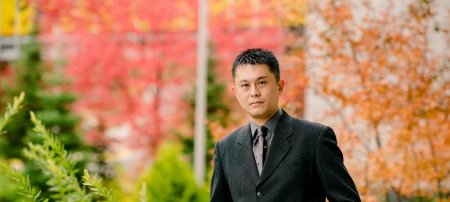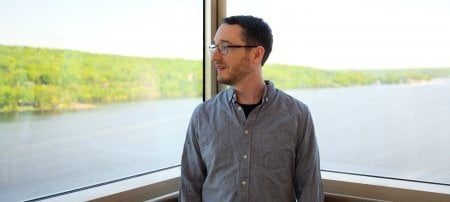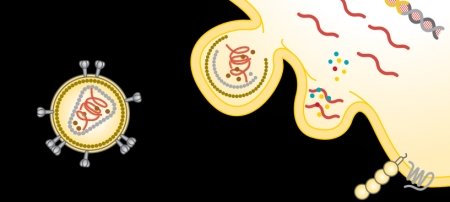Bioprinting in 3D: Looks Like Candy, Could Regenerate Nerve Cells

The printer looks like a toaster oven with the front and sides removed. Its metal frame is built up around a stainless steel circle lit by an ultraviolet light. Stainless steel hydraulics and thin black tubes line the back edge, which lead to an inner, topside box made of red plastic. In front, the metal is etched with the red Bio Bot logo. All together, the gray metal frame is small enough to fit on top of an old-fashioned school desk, but nothing about this 3D printer is old school. In fact, the tissue-printing machine is more like a sci-fi future in the flesh—and it has very real medical applications.
Researchers at Michigan Technological University hope to use this newly acquired 3D bioprinter to make synthesized nerve tissue. The key is developing the right “bioink” or printable tissue. The nanotechnology-inspired material could help regenerate damaged nerves for patients with spinal cord injuries, says Tolou Shokuhfar, an assistant professor of mechanical engineering and biomedical engineering at Michigan Tech.
Shokuhfar directs the In-Situ Nanomedicine and Nanoelectronics Laboratory at Michigan Tech, and she is an adjunct assistant professor in the Bioengineering Department and the College of Dentistry at the University of Illinois at Chicago.
In the bioprinting research, Shokuhfar collaborates with Reza Shahbazian-Yassar, the Richard and Elizabeth Henes Associate Professor in the Department of Mechanical Engineering-Engineering Mechanics at Michigan Tech. Shahbazian-Yassar’s highly interdisciplinary background on cellulose nanocrystals as biomaterials, funded by the National Science Foundation’s (NSF) Biomaterials Program, helped inspire the lab’s new 3D printing research. “Cellulose nanocrystals with extremely good mechanical properties are highly desirable for bioprinting of scaffolds that can be used for live tissues,” says Shahbazian-Yassar.
“We wanted to target a big issue,” Shokuhfar says, explaining that nerve regeneration is a particularly difficult biomedical engineering conundrum. “We are born with all the nerve cells we’ll ever have, and damaged nerves don’t heal very well.”
Other facilities are trying to address this issue as well. Many feature large, room-sized machines that have built-in cell culture hoods, incubators and refrigeration. The precision of this equipment allows them to print full organs. But innovation is more nimble at smaller scales.
“We can pursue nerve regeneration research with a simpler printer set-up,” says Shayan Shafiee, a PhD student working with Shokuhfar. He gestures to the small gray box across the lab bench.
He opens the red box under the top side of the printer’s box. Inside the plastic casing, a large syringe holds a red jelly-like fluid. Shafiee replenishes the needle-tipped printer, pulls up his laptop and, with a hydraulic whoosh, he starts to print a tissue scaffold.
3D Bioprinting Nerve Cells
This May, Marvel released its latest Avengers epic, complete with a 3D printed superhero called The Vision. The android system is printed in a massive 3D printer called The Cradle and is a tribute to both current science and past fiction.
Sci-fi has long dreamed of constructing flesh—think of Luke Skywalker’s hand or LeeLoo in The Fifth Element—but while 3D bioprinting is happening, reality has not quite caught up to that vision. Right now, bioprinting focuses on building up one tissue at a time.

At his lab bench in the nanotechnology lab at Michigan Tech, Shafiee holds up a petri dish. Inside is what looks like a red gummy candy, about the size of a half-dollar.
“This is based on fractal geometry,” Shafiee explains, pointing out the small crenulations and holes pockmarking the jelly. “These are similar to our vertebrae—the idea is to let a nerve pass through the holes.”
Making the tissue compatible with nerve cells begins long before the printer starts up. Shafiee says the first step is to synthesize a biocompatible polymer that is syrupy—but not too thick—that can be printed. That means Shafiee and Shokuhfar have to create their own materials to print with; there is no Amazon.com or even a specialty shop for bioprinting nerves.
Nerves don’t just need a biocompatible tissue to act as a carrier for the cells. Nerve function is all about electric pulses. This is where Shokuhfar’s nanotechnology research comes in: Last year, she was awarded a CAREER grant from NSF for her work using graphene in biomaterials research. “Graphene is a wonder material,” she says. “And it has very good electrical conductivity properties.”
The team is extending the application of this material for nerve cell printing. “Our work always comes back to the question, is it printable or not?” Shafiee says, adding that a successful material—a biocompatible, graphene-bound polymer—may just melt, mush or flat out fail under the pressure of printing. After all, imagine building up a substance more delicate than a soufflé using only the point of a needle. And in the nanotechnology world, a needlepoint is big, even clumsy.
Shafiee and Shokuhfar see these issues as mechanical obstacles that can be overcome.
“It’s like other 3D printers, you need a design to work from,” Shafiee says, adding that he will tweak and hone the methodology for printing nerve cells throughout his dissertation work. He is also hopeful that the material will have use beyond nerve regeneration.
Although widespread medical use of bioprinting is probably a decade or two away, in this lab, the future sits on a tabletop in a little gray box.
Michigan Technological University is an R1 public research university founded in 1885 in Houghton, and is home to nearly 7,500 students from more than 60 countries around the world. Consistently ranked among the best universities in the country for return on investment, Michigan's flagship technological university offers more than 120 undergraduate and graduate degree programs in science and technology, engineering, computing, forestry, business, health professions, humanities, mathematics, social sciences, and the arts. The rural campus is situated just miles from Lake Superior in Michigan's Upper Peninsula, offering year-round opportunities for outdoor adventure.




Comments